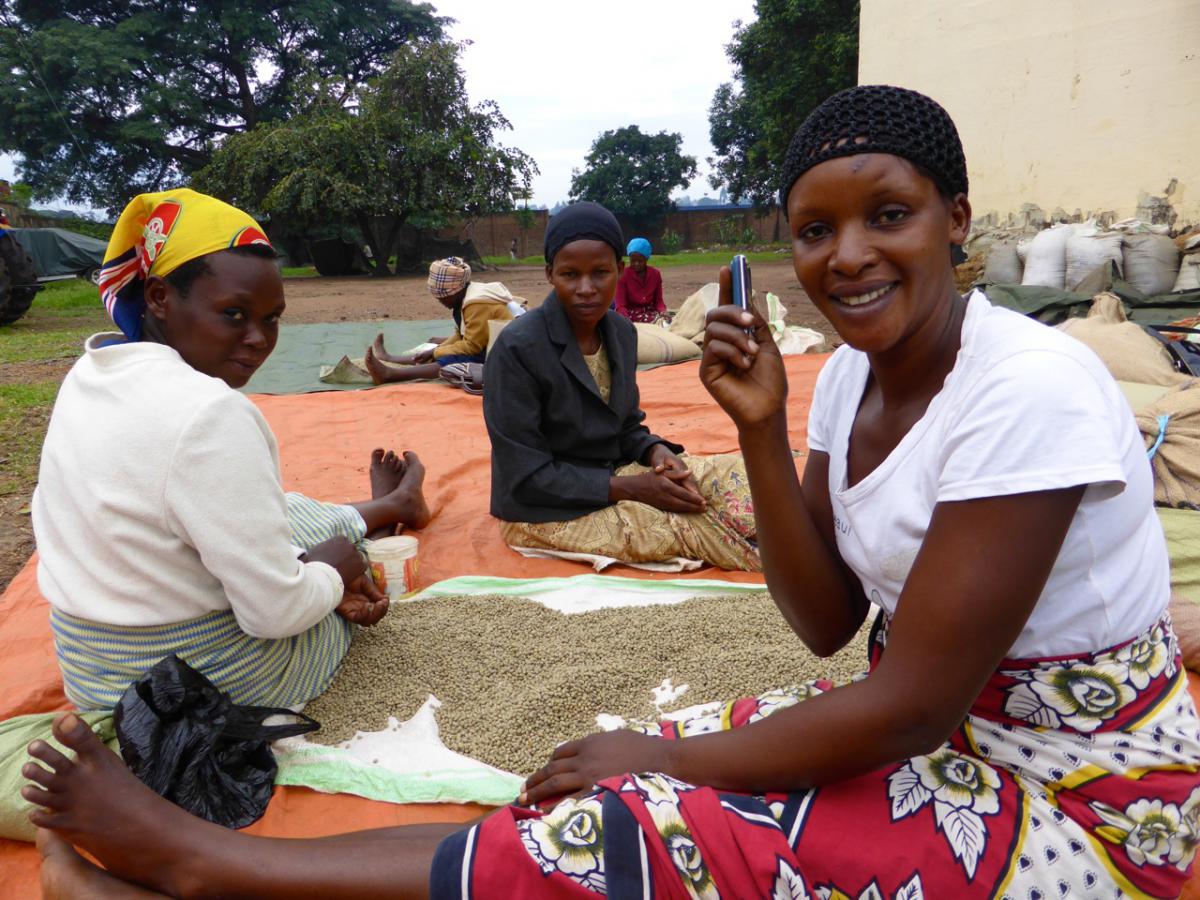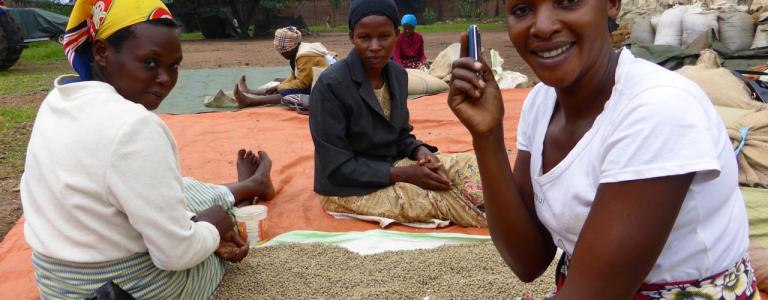Strengthening the Ties Between Gender and Resilience? Canada’s Feminist International Assistance Policy
Canada’s new feminist international assistance policy provides a bold and exciting approach to address international development challenges in contexts where inequality and exclusion of women and girls still prevail.
For millions of women and girls living in poverty around the world, each day starts with struggles that are unimaginable for most of us.
They face continuous discrimination in access to education, health care and employment, lack of control over productive and financial resources, and marginalization from decisions that affect their livelihood and well-being. These are just a few of the challenges that make women and girls extremely vulnerable to the impacts of climate change, violent conflict, economic and political insecurity.1
In cases of climate-induced drought, for example, there is an increase of work-burden for women, who are primarily responsible for water collection, as well as more time and energy spent on water provision for household and agricultural needs. In situations of food insecurity, women’s health tends to deteriorate, as they are expected to feed other family members first, while in conflict situations women and girls are the primary victims of gender-based violence.2
Despite this vulnerability, women and girls play a vital role in unlocking the transformative potential of development assistance and in achieving long-term change. They are key in the capacity of households and communities to cope with, adapt and potentially transform in the face of shocks and stressors—what we know as “resilience.”
 Three women in Uganda sort coffee to sell at market. Photo: Angélica V. Ospina.
Three women in Uganda sort coffee to sell at market. Photo: Angélica V. Ospina.
Gender equality and inclusion are not only contributing factors to more resilient societies, but prerequisites to achieving them. However, the nexus between gender and resilience in development practice remains weak.
Could Canada’s feminist international assistance policy strengthen this link and help us build resilience?
Canada’s progressive policy approach places women’s and girls’ needs and potential at the centre of its international assistance, which constitutes a step in the right direction. By prioritizing the empowerment of women and girls as agents of change, Canada’s new policy provides a unique opportunity to strengthen resilience-building processes and raise awareness on the gender-resilience nexus across its six action areas.
But having a new policy won’t automatically translate into more gender-sensitive resilience building. Canada must now embark on a long-term process that will require continuous reflection, monitoring and learning among diverse stakeholders, as well as a frank dialogue about what works and what doesn’t in each context. Realizing this long-term commitment is essential to empowering women and girls amidst a complex and uncertain global context.
The following are some of the key gender-resilience linkages to watch for as Canada advances in the implementation of its new foreign assistance policy.

Action area 1: Gender equality and the empowerment of women and girls
- Strengthening women’s organizations and movements contributes to self-organization, one of the main attributes of resilient societies. Improving the government’s provision of services to women and girls helps achieve equality and inclusion, and increases the robustness of local institutions.
Action area 2: Human dignity
- Ensuring that humanitarian assistance addresses the needs and potential of women and girls is crucial to build effective coping and adaptive capacities. Access to health care, nutrition and education is a cornerstone of inclusion, needed to sustain long-term change.
Action area 3: Growth that works for everyone
- Increasing women’s access to economic resources and opportunities is essential for livelihood diversification, as well as to ensure that women have the flexibility and the autonomy needed to adapt to changing circumstances. It can also create new opportunities to engage the private sector in resilience building, by integrating women/women-owned enterprises into supply chains.
Action area 4: Environment and climate action
- Advancing women’s leadership and decision making is crucial for innovative responses to the challenges posed by climate change. Fostering women’s entrepreneurship and women-led initiatives to address environmental challenges—including the use of renewable energy—can strengthen experimentation and learning, which are essential for resilience.
Action area 5: Inclusive governance
- The protection and promotion of human rights, the rule of law and political participation are fundamental attributes of resilient societies, and are necessary for the empowerment of women and girls. The participation of women in positions of influence can act as a precursor of change across scales—community, regional, national—and improve institutional robustness.
Action area 6: Peace and security
- Effective participation of women in peacebuilding and post-conflict reconstruction is the basis for long-lasting prosperity. Ensuring that women help shape the design and implementation of security strategies is important for empowerment, as well as to achieve more comprehensive solutions to the root causes of conflict.
Canada’s new feminist international assistance policy provides a bold and exciting approach to address international development challenges in contexts where inequality and exclusion of women and girls still prevail. But the true test of the policy’s effectiveness will be our ability, as a society, to engage in a long-term process of change that requires seeing gender integration not as a novelty but as the new normal—as an absolute prerequisite to building resilience both in Canada and abroad.
Notes
1. USAID (2013). “Feed the future learning agenda literature review: Improved gender integration and women’s empowerment”,. Washington DC: Feed the Future Program, Washington DC; Mercy Corps. (2014). “ Rethinking resilience: Prioritizing gender integration to enhance household and community resilience to food insecurity in the Sahel”., Portland, Oregon.
2. Le Masson, V., Norton, A., & Wilkinson, E., (2015). Gender and Rresilience (BRACED Working Paper),. Overseas Development Institute (ODI). Retrieved from, BRACED Working Paper, available online: https://www.odi.org/sites/odi.org.uk/files/odi-assets/publications-opinion-files/9890.pdf
You might also be interested in
Advancing Gender Equality and Human Rights at COP 29: Why intersectionality matters
There has been resistance to integrating intersectionality language in UNFCCC discussions, but Angie Dazé explains why it is a key step toward climate justice.
Effectively Delivering on Climate and Nature: NDCs, NAPs and NBSAPs Synergies
This checklist for national policy-makers illustrates potential opportunities and interactions during the development or update of the nationally determined contribution (NDC), National Adaptation Plan (NAP), and national biodiversity strategies and action plan (NBSAP).
How to Make Nature-Based Solutions for Adaptation Work for Everyone
Effective nature-based solutions (NbS) for adaptation start with integrated climate risk assessments. These take-aways will help practitioners plan for inclusive and sustainable NbS.
Inclusive Nature-Based Solutions for Climate Adaptation
Discover how climate change and biodiversity loss impact people differently and how inclusive nature-based solutions for adaptation can help.
